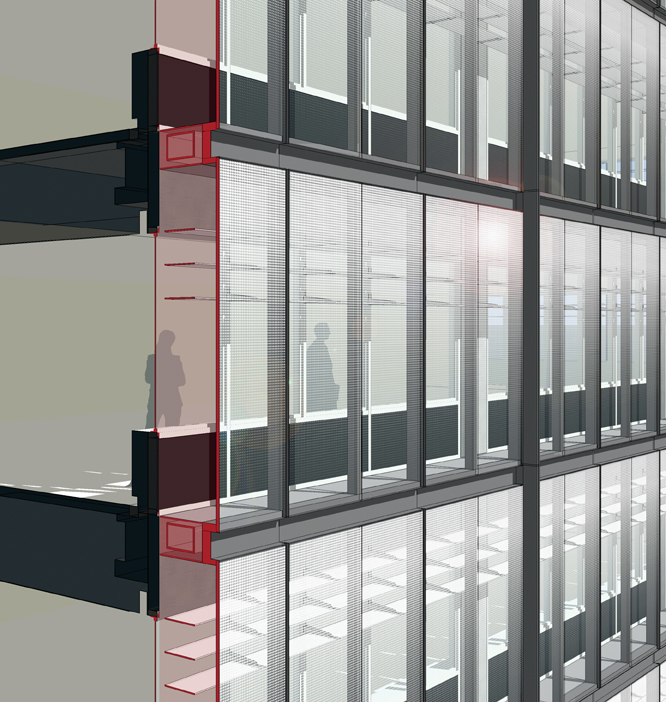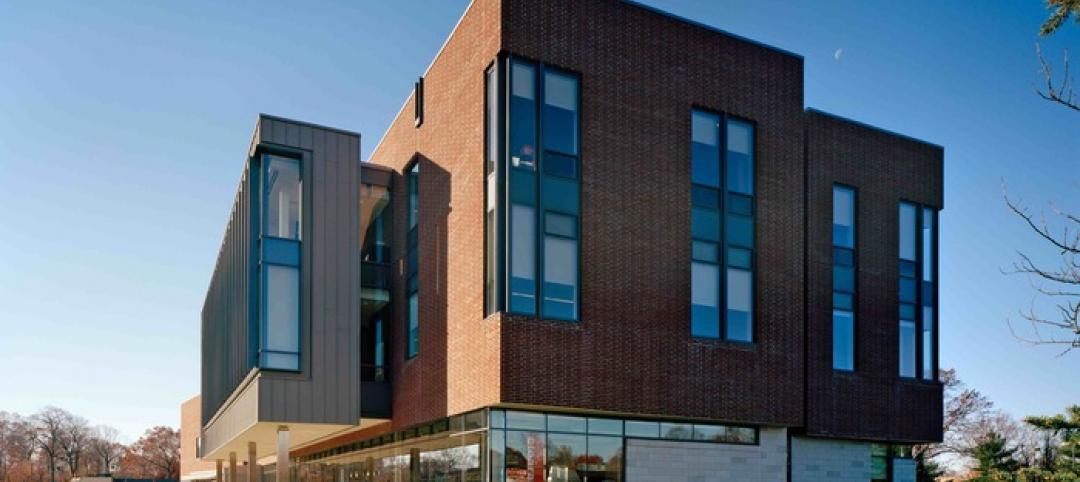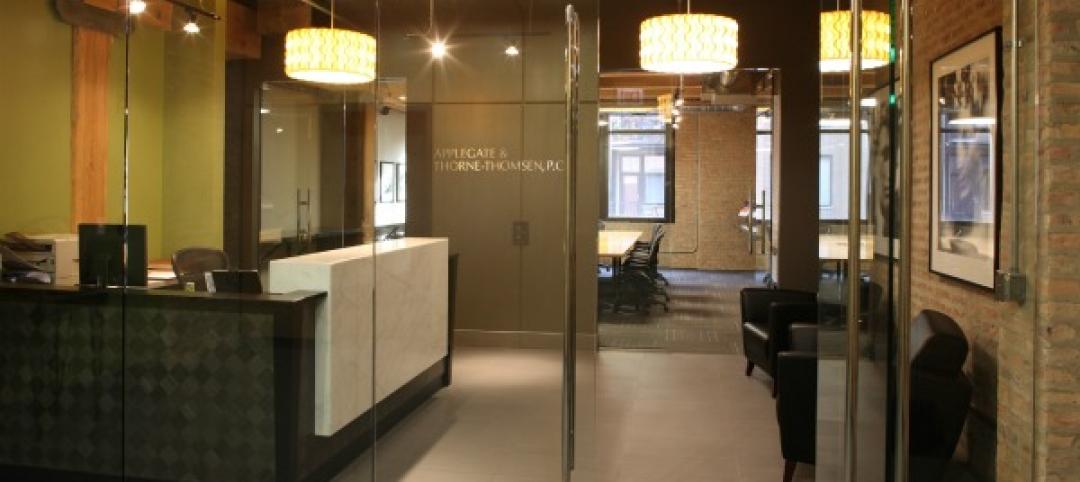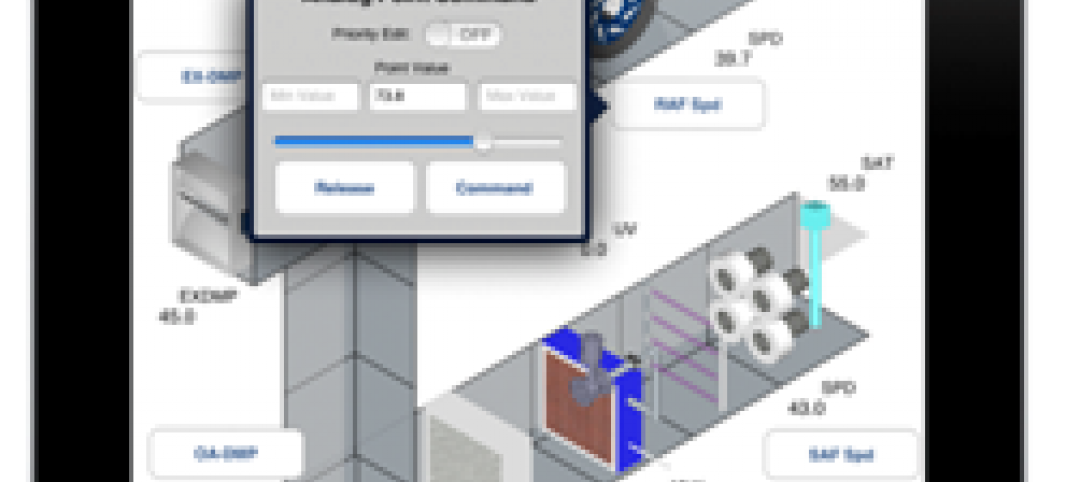The A.J. Celebrezze Federal Building, a 32-story office building in Cleveland, Ohio, was built in the late 1960s for the U.S. General Services Administration. As with many early generation window walls, significant deterioration has occurred over time due to moisture damage from failed drainage systems. This resulted in delamination of exterior wall panels, compromising the air and moisture barrier. The panels had been stabilized with a retrofit, but their effectiveness as a perimeter barrier has reached its limit, as evidenced by the occurrence of frost inside the exterior envelope during winter.
Our firm, Interactive Design, was engaged as the architect to correct the façade deficiencies for the $121 million project, which is funded under the American Recovery and Reinvestment Act of 2009. To mitigate these issues the façade renovation program was focused on four primary requirements: 1) repair/replacement of the building envelope, 2) providing blast protection, 3) upgrading the energy conservation of the envelope, and 4) maintaining full occupancy during construction.
Blast pressure analysis indicated that the frame of the building would accommodate increased loads, but only at the column floor beam connections. Noncomposite slab construction eliminated the transfer of loads via diaphragm. Therefore, new tube beams were added externally to transfer the wind, blast, and gravity loads to these points. Deflection of the tubes under blast conditions may not impact the structural frame. The geometry formulated an exterior configuration two feet, six inches deep, which led logically to the investigation of a double wall assembly.
Originally the project was conceived as an overclad wall system. However, adding an overclad assembly would have extended the volume of interior spaces, resulting in significant fire protection modifications and perimeter air distribution modifications to the existing fan coil units.
MAKING DOUBLE WALL VIABLE
Double wall technology is one of the most complex building envelope forms. Originally developed and employed in Europe, it has been relatively slow in migrating to the U.S. However, higher energy costs are now making these systems more viable. In new construction, the inability to offset the initial high envelope costs through energy savings historically has been the obstacle for double wall usage. Specialized projects, such as museum construction, can justify these initial costs due to constant temperature/humidity requirements. For renovation projects such as the A.J. Celebrezze Federal Building, the existing interior wall can be reused as the interior skin to offset much of the cost delta.
The design process for double walls relies on the integration of all systems. The ventilation environment of the building informs the design. It is imperative that an accurate and robust energy model be developed to assist in the analysis and creation of the double wall. A fundamental challenge was to understand the effect of a double wall upon the existing building. The design team embarked upon an extensive series of computational fluid dynamic studies. Winter, spring/fall, and summer conditions were run in extreme temperature and solar conditions. The purpose of the CFD analysis was to fully understand the temperature relationships in the wall cavity and occupied spaces during seasonal variances.
The architects were able to manipulate glazing layups, light shades, and frit variations to impact the performance characteristics. The design team pursued a variety of critical design paths simultaneously. These included both actively ventilated and sealed cavity conditions.
A significant factor for this project is that the building has historically a very low winter relative humidity. This ultimately permitted a sealed cavity system with no ventilation from either the inside or outside. The temperature and humidity of the internal cavity are allowed to float, so to speak, with its surrounding environments. It acts as a buffer between inside and outside, mitigating the differences between the two without using additional mechanical means, and minimizing energy consumption.
CUTTING ENERGY USE 65%
This system is designed to improve the existing perimeter energy consumption by approximately 65%. It is most efficient to the building during the winter months, when it acts like a thermal blanket and significantly reduces the need for heat from the existing perimeter fan coils. During summer months, shading systems block direct solar gain to the tenant-occupied spaces. The cavity will increase in temperature while not detrimentally affecting the interior environment or the existing mechanical system.
The final configuration is a noncombustible, sealed assembly that requires minimal maintenance. Access to the cavity is provided at each floor by operable interior windows in the inner wall.
The passive double wall system being employed at the A.J. Celebrezze Federal Building is one solution to the growing number of fully occupied buildings that have aging or seriously deteriorated skins. Economic constraints dictate that building owners cannot afford to empty their buildings of tenants to do replacement or maintenance work on façades. Therefore, systems such as this may offer an alternative to complete façade replacement, at the same time lowering energy consumption and enhancing sustainability by preserving existing materials. BD+C
--
Charles Young is a partner with Interactive Design, Inc., an architecture firm based in Chicago. This article is adapted from Chicago Architect, the journal of AIA Chicago.
Related Stories
| Jan 27, 2012
Smith Seckman Reid opens two new offices
Smith Seckman Reid, Inc. (SSR), an engineering design and facility consulting firm, has opened two new offices, one in Chicago, the other in Washington, D.C.
| Jan 27, 2012
BRB Architects designs new campus center for Molloy College
Intended to be the centerpiece of the College’s transformation from a commuter college to a 24-hour learning community, the “Public Square” will support student life with spaces such as a café, lounges, study rooms, student club space, a bookstore and an art gallery.
| Jan 27, 2012
Columbia University’s New Core Laboratory aims for LEED Silver
Construction manager Sordoni Construction Co. along with the design team of Payette Architects and Vanderweil Engineers will provide design and construction services to renovate the majority of the existing Core Lab building to create the new Lamont Center for Bio-Geochemistry.
| Jan 26, 2012
Three dead, 16 missing in Rio buildings collapse
The buildings, one 20 floors high, collapsed on Wednesday night in a cloud of dust and smoke just one block away from the city's historic Municipal Theater.
| Jan 26, 2012
Siemens launches smoke detection knowledge center
New knowledge center web site demonstrates efficacy of smoke detection.
| Jan 26, 2012
Hendrick Construction completes Osso Restaurant in Charlotte
Designed by François Fossard, Osso's upscale interior includes tapered, twisted decorative columns and an elegant fireplace in the center of the lounge.
| Jan 26, 2012
HOK partners with USGBC on design of Haiti children's center
Passive design principles give form to a sustainable, restorative environment for the children of Haiti.
| Jan 26, 2012
American Standard names Gould as president and CEO
Gould succeeds Don Devine, who led the successful turnaround of American Standard Brands.
| Jan 26, 2012
Summit Design+Build completes law office in Chicago
Applegate & Thorne-Thomsen's new office suite features private offices, open office area, conference rooms, reception area, exposed wood beams and columns, and exposed brick.
| Jan 24, 2012
New iPad app ready for prime time
Siemens’ versatile application connects users to APOGEE BAS control and monitoring functions via wireless network connectivity. The application directly interacts with BACnet/IP and Siemens APOGEE P2 field panels.

















